Guest post by Alessandra Masu, author, journalist and art historian
Finally. After the pioneering studies of Consuelo Lollobrigida and Sheila Barker and a few other specialists, mostly women (also including Lucia Tomasi Tongiorgi, Lucia Fois, and Anna Lisa Genovese), and a few missed opportunities (like the exhibition The Ladies of Art, Milan 2021), finally in Rome just opened Roma Pittrice.
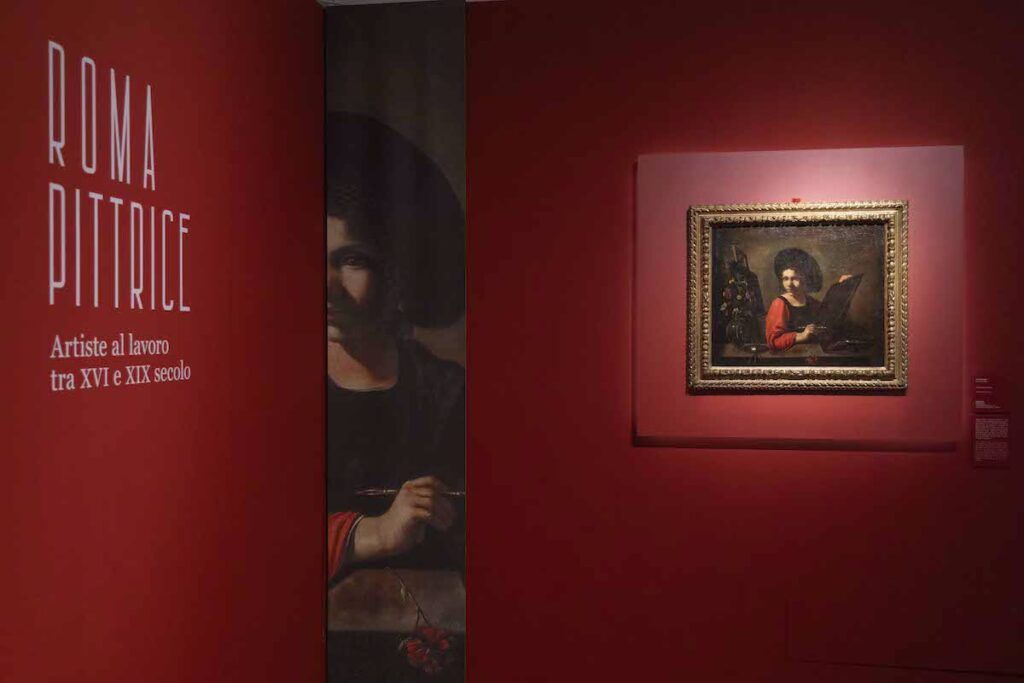
Finally, not another anthology of women’s painting, decades after the publication of Why Have There Been No Great Women Artists? (This was, of course, the essay with which Linda Nochlin effectively initiated modern historical research on women in the arts. It would lead to the first wide-ranging survey of the subject: Women Artists: 1550–1950 at The Los Angeles County Museum of Art.) Finally, on the eve of Rome’s Jubilee 2025, Roma pittrice is the first exhibition to document and show the contribution of women in making Rome the Capital of the Arts in Modern Age Europe. For Consuelo Lollobrigida and for myself, finally a bittersweet recognition, because it comes after almost a decade of dismissed proposals and hijacked projects. I am therefore very proud to have contributed to this show an essay and entries in the catalog, and a few works from my personal collection.
The core of the Exhibition
The exhibition’s title refers to seventeenth- and eighteenth-century historiography, echoing Malvasia’s Felsina pittrice (Bologna, 1678). More than three centuries later, this show demonstrates that Rome, a “city of men,” and at the same time the capital of the arts in modern Europe, has seen far more women artists “at work” than most people know. The number of women in the city was always lower than that of men, due to the need of the papal court for specialized labor. So women artists frequently played minor roles in the arts system. And male masters and family members often appropriated. Nevertheless, by 1607 the Academy of San Luca passed a resolution allowing women to become members. Attracted by the opportunities of training and working commercially, the number of women artists—Italian and foreign—increased overtime.
Roma Pittrice is curated by Ilaria Miarelli Mariani and Raffaella Morselli, with the collaboration of Ilaria Arcangeli. The exhibition introduces to the general public, through 130 works (some on public display for the first time), 56 artists, of which only a few were already well known.
The first work to welcome visitors is the Portrait of an Artist. It depicts an unidentified still life painter at work, all the tools of her trade in full display, looking straight at the viewer. It is attributed to Pietro Paolini, but one wonders how such an intimate portrait is not the sitter’s self-portrait.
Lavinia Fontana, a “singular painter on a par with the first men”
The first room is dedicated to Lavinia Fontana (1552–1614). She began her career in Bologna and, as was often the case with women painters, in her father’s workshop. Lavinia moved to Rome in 1603–04 and received numerous public and private commission. She became the favored portraitist of Pope Paul V. But it was her husband and agent, Giovanni Paolo Zappi, also a painter, who signed the contracts on her behalf. In this room, the two versions of her Self-portrait at the Spinet, both signed and dated, appear side by side for the first time. Lavinia, in her early twenties, presented herself to the art scene in Bologna with these self-portraits. The paintings validated her professional and cultural identity as an artist and cultured woman.

On display next to these self-portraits is the only painting in the room probably painted in Rome. Lavinia might have created it for one of the aristocratic ladies of the circle of her patron, cardinal Alessandro d’Este. It is a newly discovered small portrait of a noblewoman on lapis, with a precious frame made of colored marbles. On the opposite wall is an intense, life-sized Lavinia Fontana portrait of another young noblewoman. It is in fact attributed to the decade before the artist moved to Rome (1590–1600, Giacometti Old Masters Paintings).
Artemisia Gentileschi and Giustiniana Guidotti
In the next room, Artemisia Gentileschi (1593–1654) is the undisputed star, with a Cleopatra and my Aurora. Aurora is a monumental painting with an unprecedented iconography. It is almost a lay altarpiece in which the artist maximizes her talents: reinventing a classic iconography, the masterly use of chiaroscuro, and the creation of a sensual, iconic image of femme forte.

In the same room, a signed painting, the Allegory of Poetry and Music (ca. 1619, oil on canvas, Koelliker collection) represents Giustiniana Guidotti Borghesi (1600?–1634). Like Artemisia, she trained in the workshop of her father Paolo. In his biography of her father, Giovanni Baglione describes her as “…an only daughter who, with feasible diligence, in all the virtues, both those of a woman and a man, allows herself to be taught.” She was among the first women to attend the Academy of San Luca. The first was Girolama Cagnucci Parasole (Rome? 1567?–Rome, 1622), whose portrait in widow’s attire in the Academy of San Luca dates to 1612, the year of her artist-husband’s death.
Still-life painters in seventeenth-century Rome
The focus of the third room is still-life painters in the seventeenth century. Born in the Marche region, Giovanna Garzoni (Ascoli, 1600?–Rome, 1670) was active in many European courts. Yet she wrote: “my desire is to live and die in Rome.” She was a skilled miniaturist and, in 1633, the Academy of San Luca admitted her. Garzoni displayed a strong scientific interest in the plant and animal world, which she depicted using a Flemish lenticular technique. She also painted portraits in the same style. In the show we can admire her Self-Portrait as a Poet and her album of 29 works on paper from San Luca.

Less known, both Anna Stanchi and Laura Bernasconi belonged to artistic clans. Anna Stanchi (Rome, 1613?–1681) has only recently been studied. She shared her workshop/house in Via Paolina with her brothers Giovanni, Niccolò, and Agostino. Laura Bernasconi (Rome, 1622–1675) is present in a few important Roman collections, such as the Pamphilj. She is known as “dei Fiori” both for her specialisation and for having been the favorite pupil of Mario Nuzzi, or “dei Fiori.”

I curated both their biographies for the database linked to the Artemisie Museum, the first digital Museum of Women in the Arts, which I started with Consuelo Lollobrigida and Beatrice De Ruggieri in 2021. The links in the artists’ names, above, will take readers directly to these biographies.
Portrait painters in Rome during the 1600s
Women artists were very active in the portrait genre. They painted portraits of themselves, members of their family, or clients, often but not exclusively women. We know just one autograph work by the noblewoman Claudia Del Bufalo, though the Savelli inventories also mention her. It dates to 1604 and depicts her sister (in law?) Faustina. The painting, which was in the Borghese collections until the late twentieth century, reveals a deep knowledge of the canons of late sixteenth-century portraiture.
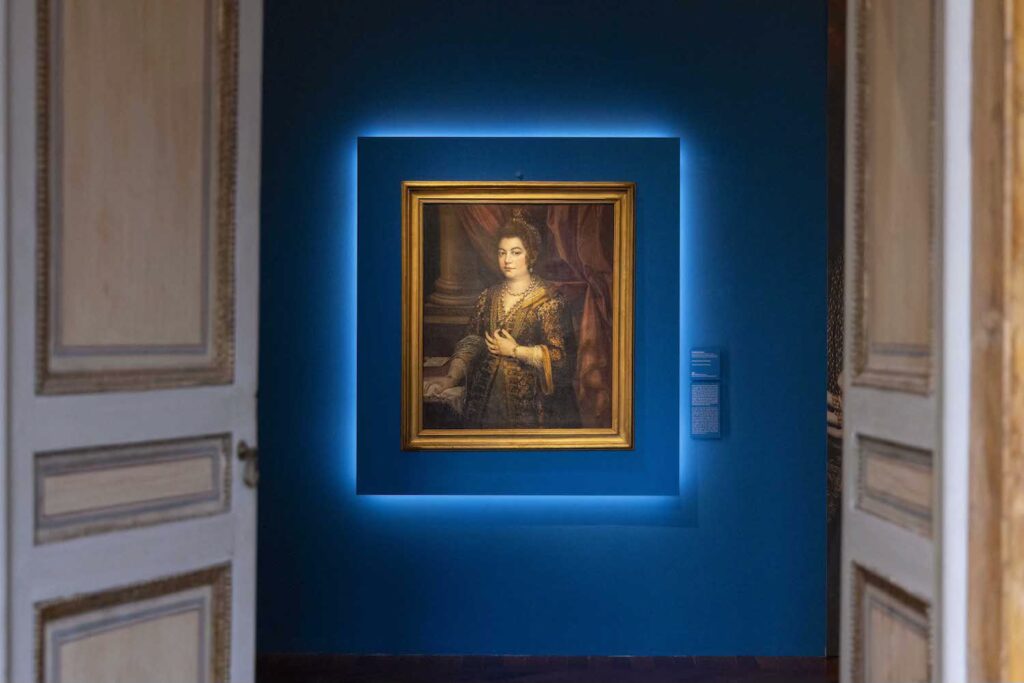
I personally conducted an extensive archival research on this artist. The results are reported in her biography in the above-mentioned Artemisie database. In the same Museum database Consuelo Lollobrigida curated the biography of Caterina Ginnasi (1590–1660). The artist was a pupil of Gaspare Celio and Giovanni Lanfranco, and, from 1638, a member of the Academy of San Luca. Ginnasi painted religious paintings and portraits. She is credited with the portrait of the cardinal displayed in the exhibition, her uncle and patron Domenico Ginnasi.
Graphic arts, architecture and miniature in the age of Baroque
During the sixteenth and seventeenth centuries, women artists in Rome were active in various fields, from architecture to painting, often specializing in engraving and miniatures. The next room showcases the work of the engraver Diana Scultori, known as “Diana Mantovana” (Mantova, 1547–Rome, 1612 ). She managed a profitable commercial enterprise in Rome and, in 1580, the Congregazione dei Virtuosi al Pantheon admitted her.

Girolama Cagnucci and Elisabetta Cattanea (Bergamo? 1578–Rome, 1617) both played a central role in their husbands’ workshops. Girolama specialized in wood engraving, alongside her husband Leonardo Parasole, a woodcutter and editor. Elisabetta grew up in the Conservatorio di S. Caterina della Rosa, where the nuns taught her “women’s arts.” In 1593, she married the mosaicist Rosato Parasole. In 1616 she published a volume of woodcut prints with examples of lacework patterns she invented. Galileo Galilei and Michelangelo Buonarroti the Younger introduced the painter and engraver Anna Maria Vaiani (Milano, c. 1604–Rome, 1654), daughter of the Florentine artist Alessandro Vaiani, at the Barberini court. She mainly specialized in naturalistic engraving.
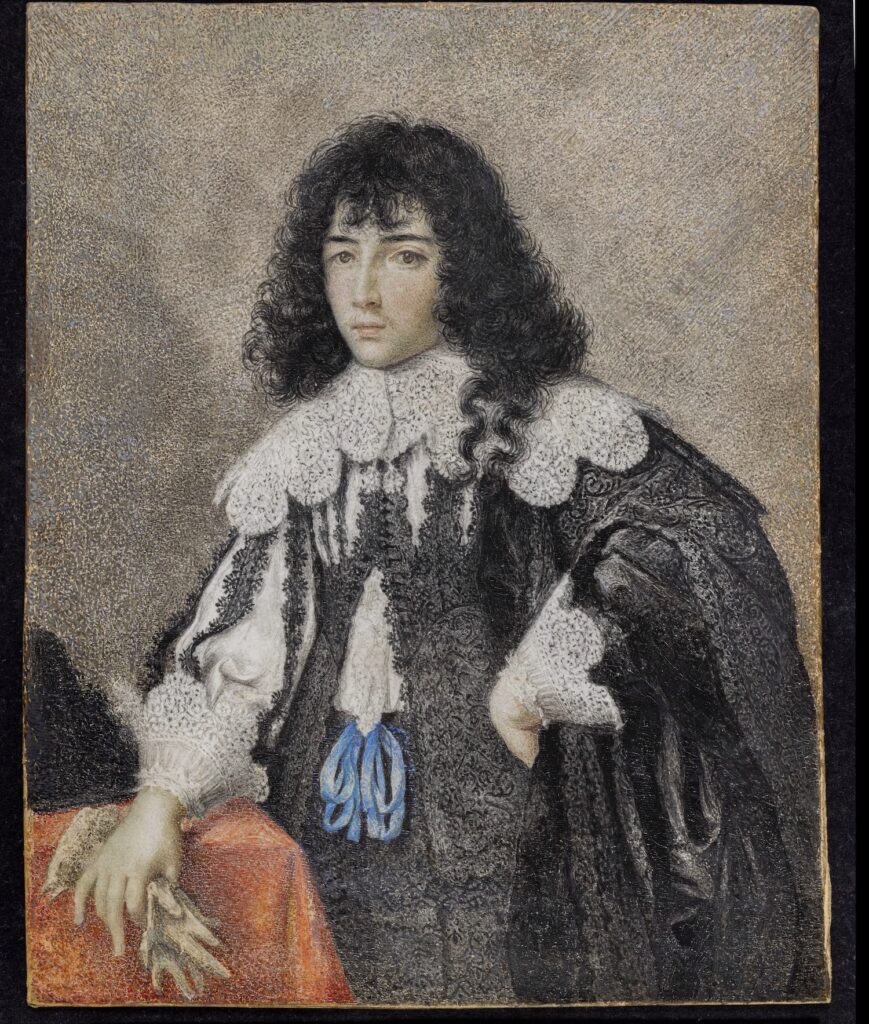
Until the eighteenth century, miniature art was the genre that women predominantly practiced. The society of the time believed it to be the most suitable for women’s supposed physical limitations. Maddalena Corvini (Rome, 1607–1664) excelled in this field, learning the art from her grandfather, the miniaturist Frans van de Casteele. In 1655 she joined the Academy of San Luca. Plautilla Bricci (Rome, 1616–1692) was an “architettrice” and painter, listed in the Academy of San Luca in 1655. Her architectural projects include Villa Benedetti in San Pancrazio on the Gianicolo hill. Built to resemble a vessel, it was mostly destroyed during the 1849 siege of Rome.
The eighteenth century: Angelica Kauffmann, Laura Piranesi and the nun-artist Maria Luigia Raggi
There is a room dedicated to the protagonist of the eighteenth-century Roman art scene, the painter and salonnière Angelica Kauffmann (Coira, Switzerland 1741–Rome, 1807). Next, an interesting room focuses on two less known artists: Laura Piranesi and Maria Luigia Raggi. Piranesi (1754–1790), the eldest daughter of Giovanni Battista, was born and grew up in Rome, training in her father’s workshop. She specialized in views that were appreciated by foreign Grand Tourists, especially the British. Of the existing etchings of views of ancient and modern Roman monuments she signed, the majority are replicas of her father’s renowned larger works. They have a less dramatic and more picturesque quality. In the 18th century, women painters tried their hand also at the much sought-after genre of classical landscapes.
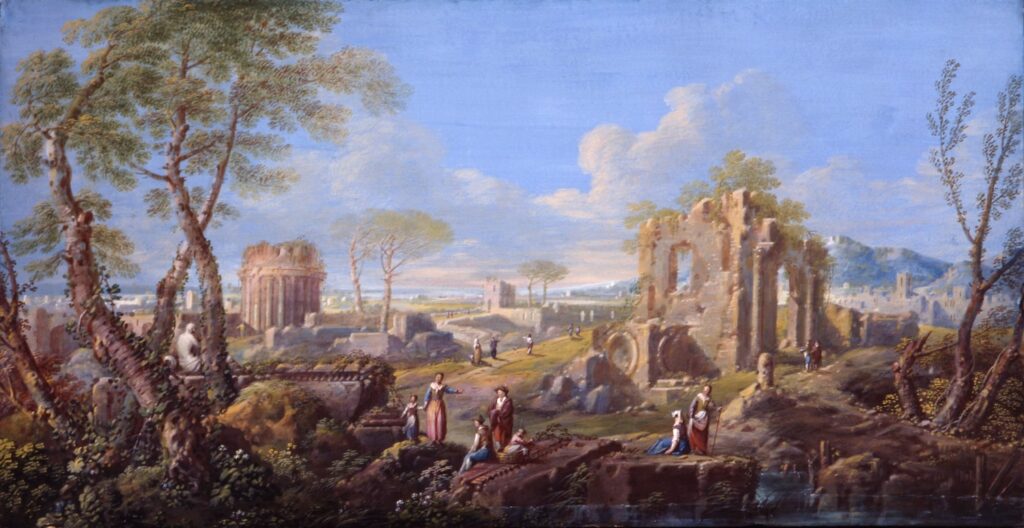
The Genoese noblewoman Maria Luigia Raggi (before 1742–1823) continued the legacy of Claude Lorrain and Jan Frans Van Bloemen, combining it with an idealized representation of Roman ruins in paintings and prints. Forced to become a nun, she devoted her entire life to landscape painting, which she learned from her tutor, Maria Castello. Between 1781 and 1783 she lived in the Raggi Palace in via del Corso in Rome. Here she painted capriccios and views, including the four tempera paintings in the Pinacoteca Capitolina, previously attributed to the anonymous Maestro dei capricci di Prato (three of them are on display). The first monograph on the nun-painter is Consuelo Lollobrigida’s Maria Luigia Raggi. Il Capriccio paesaggistico tra Arcadia e Grand Tour.
The great discovery of “Roma Pittrice”: Portraits and self-portraits in the nineteenth century
Two brilliant portraits by the German painter Luise Seidler (1786–1866) introduce visitors to the Salon of the Nineteenth century Portraits and Self-Portraits. She painted both in 1819. One is of the actress and friend Fanny Caspers with the Coliseum in the background. The other is of mother and daughter with a view of the Vesuvius (Museo di Roma). It is one of the most impressive sections of the exhibition, for sure the one richest in surprises and discoveries. At the beginning of the nineteenth century women artists carved more space for themselves in the city’s arts system. Finally they were able to work in all techniques and genres, including marble sculpting.
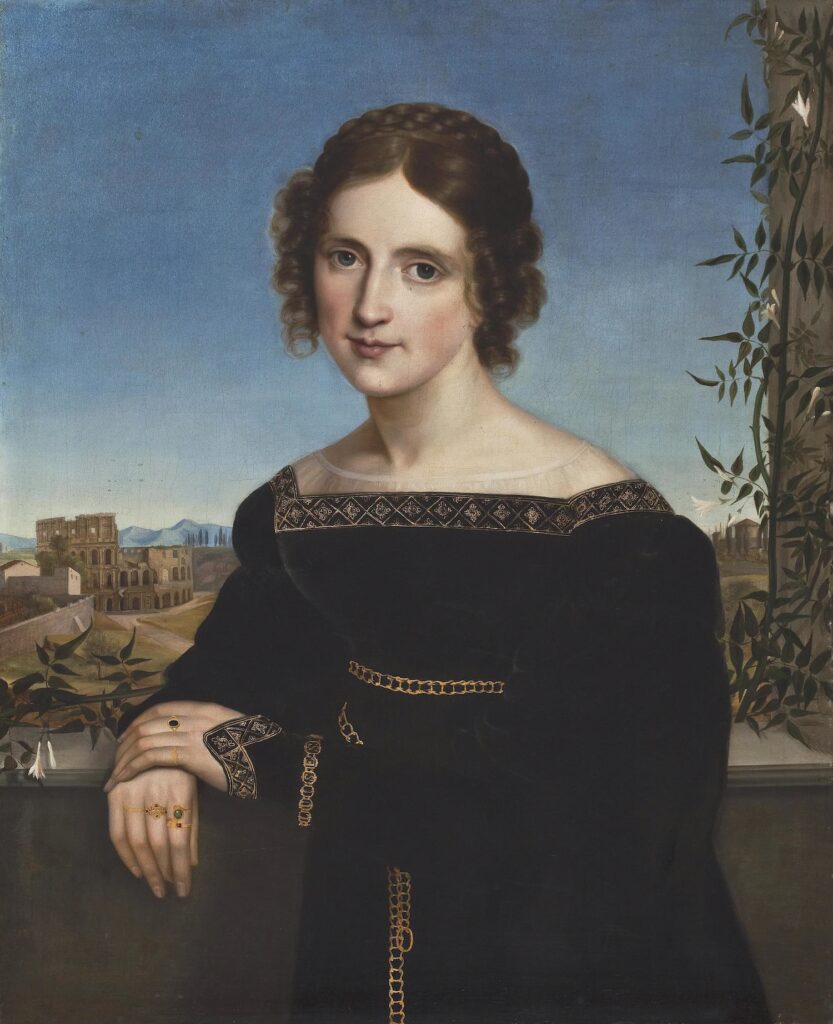
The first woman to attend the Accademia del Regno Italico at Palazzo Venezia was the Bolognese Carlotta Gargalli (Bologna, 1788–Rome, 1840). She was admitted in 1811. While in Rome, she started a friendship with a fellow woman artist: the Milanese Bianca Milesi (1790–1849). Canova’s protégé, Bianca joined forces with the German feminist painter Sophie Reinhardt, with whom she shared an atelier-house. Back in her native city, between 1815 and 1836 Gargalli lead a successful studio of her own. She specializing in portrait painting. After the death of her daughter Sofia, she returned to Rome with her second husband. There she opened an atelier specialized in miniature copies from prototypes of the sixteenth and seventeenth centuries. A masterpiece of her maturity in Bologna, the Portrait of de’ Bianchi Family, closes the Salon.

International exhibitions on the Capitoline Hill
The international exhibitions on the Capitoline Hill in 1809 and 1810 exemplified the Parisian and London model of group exhibitions. They were crucial for the evolution of the Roman art market. In the first one, six of the 64 participants were women artists. Iin the second, which had 59 participants, eight were female.
Portraits of women by women
In this gallery, 15 women painters are the protagonists of as many portraits and self-portraits. Amalia De Angelis (Rome, 1824–1873) painted a self-portrait after two important events. She received a special prize for being the first woman to participate in the Clementino-Pellegrini Competition of the Academy of San Luca (1844). And, she won the 3rd Gregoriano Competition (1845) organized by the Congregazione dei Virtuosi del Pantheon.
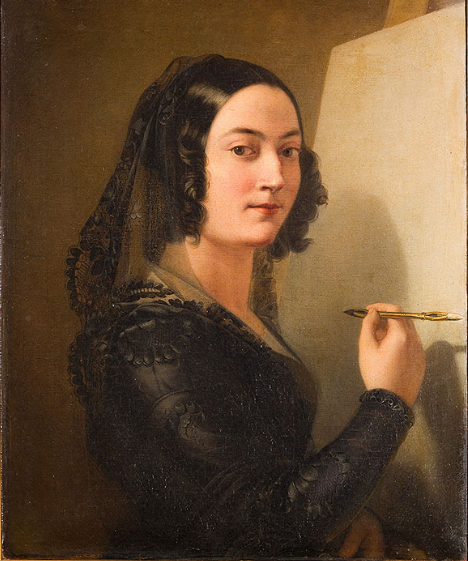
The network of relationships that women artists created with other women is well represented too. Seidler’s Portrait of Fanny Caspers was on display at the first show of Nazarene painters in 1819, held at Palazzo Caffarelli on the Capitoline Hill. Seidler was the only woman to participate. Her fellow artists and intellectuals, including her friend Goethe, admired her and held her in high esteem. She also painted Dorothea Denecke von Ramdohr, who came to Italy to join her diplomatic husband and her daughter Lilli in Naples.
The Roman painter Emma Gaggiotti (1825–1912) painted her friend Adelaide Anne Procter (pseud. Mary Berick), a noteworthy English feminist poet, in London. Charlotte Bonaparte (Paris, 1802–Sarzana, Italy, 1839) painted a portrait of her beloved sister Zenaide.
A famous self-portrait
Emma Gaggiotti signed a portrait photograph of herself as “painter and patriot.” She was very active in the Risorgimento movements. Contemporary artists and poets, including Giuseppe Gioacchino Belli, praised her for her many talents. Gaggiotti initially specialized in portraiture and allegorical themes, using a style inspired by Raphael and Purism, and winning commissions from Queen Victoria and Prince Albert in London. Her self-portrait wearing dark clothes, without any ornaments, like a “true artist” (perhaps the one from the Uffizi, on view here), was shown at the Royal Academy’s exhibition in 1851 with great success.
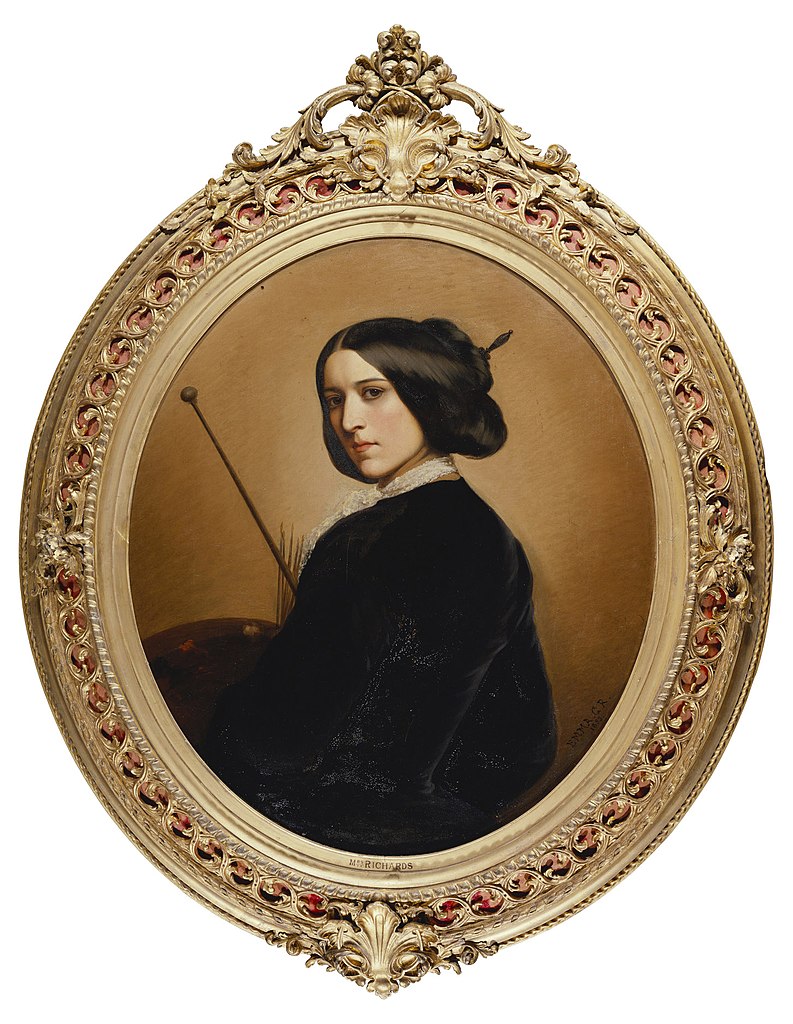
The portrait was reproduced for very prestigious clients. Queen Victoria gave a larger version to her husband for Christmas in 1853. And the Prince of Prussia, the future emperor William I, purchased another replica. Gaggiotti moved to Berlin in 1853. There she portrayed Prince William and his friend and mentor the naturalist Alexander von Humboldt, as well as other personages of the German high nobility. She is an example of an emancipated and international artist: she painted for Napoleon III and the Savoy court too.
Miniature Artists
The amateur artist Marianna Waldstein, Marquise de Santa Cruz (Vienna, 1763–Fano, Italy, 1808) gave the Academy of San Luca her miniature of Raphael’s Self-portrait with a Friend for which she also designed the elegant frame. Women artists continued to excel in miniature painting in the first half of the nineteenth century. Among them were Turin-born Sofia Clerk (1778–1829) and the Roman Bianca Boni (1786–1857) and Teresa Fioroni (1799–1880).
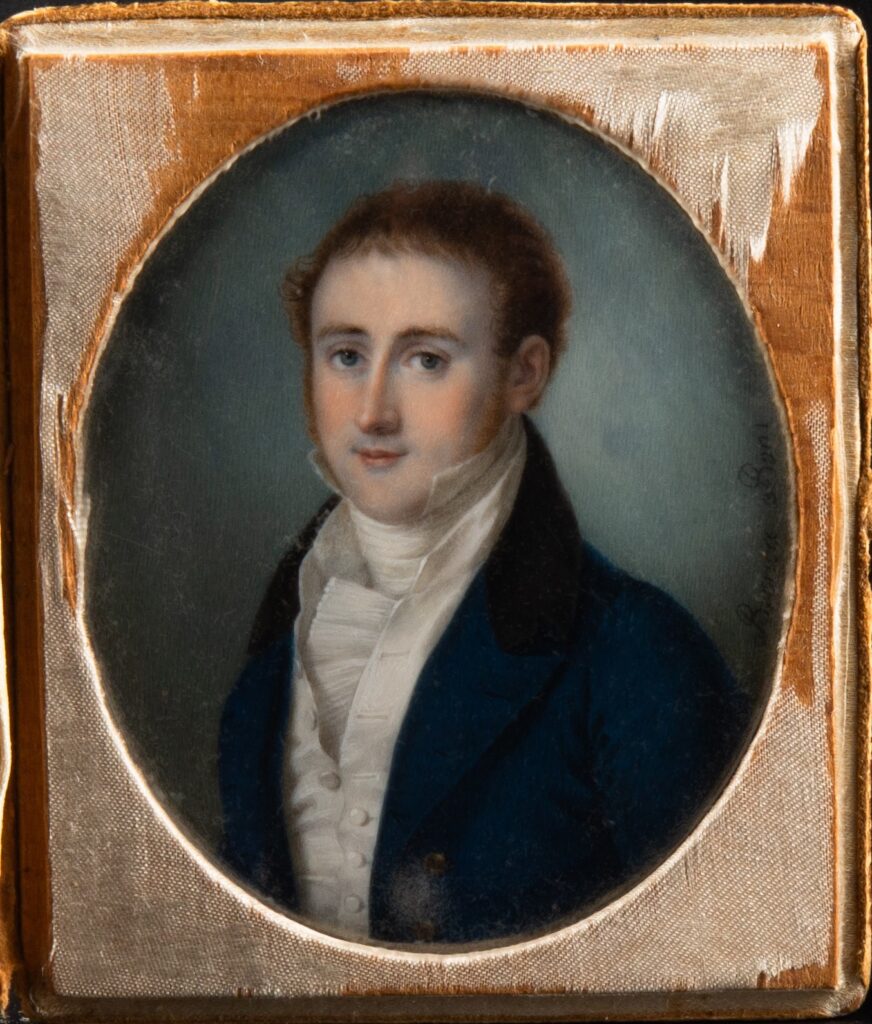
Several editions of Mariana Starke’s Information and Directions for Travellers on the Continent, a guide of Italy for English travellers, recommended Bianca Boni and Enrichetta Fioroni Narducci Koelmann (1806–1892, Teresa’s younger sister) as the best miniature artists in Rome. On May 22, 1825 Bianca was elected Member of the Academy of San Luca. The Academy awarded the honor on the grounds that “…for a long time [the Academy] has admired Your skill in the art of fine miniature painting and Your rare constancy in the practice of that discipline, thanks to which You have forged a reputation for yourself both in Rome and abroad.” A prolific artist, she worked mostly for British Grand Tourists. That is why the only signed work presently in Rome is my Portrait of a Young Man.
Landscape painting in nineteenth-century Rome
In the hierarchy of genres in the nineteenth century, landscape painting was one of the most noble. The artist, writer, salonnière and traveller Marianna Candidi Dionigi (Rome, 1756–1826) created landscapes with an arcadian-literary feeling. While adhering to the canons of the neoclassical landscape, she was also inspired by new analytical trends proposed by North European painters like Jakob Philipp Hackert. She published a book on the towns in Lazio, Journeys in a few cities of Lazio (1809), highlighting her archaeological interests. And in 1816, with the approval of the Academy of San Luca’s professors, she published a treatise on landscape painting (“pittura de’ paesi”).
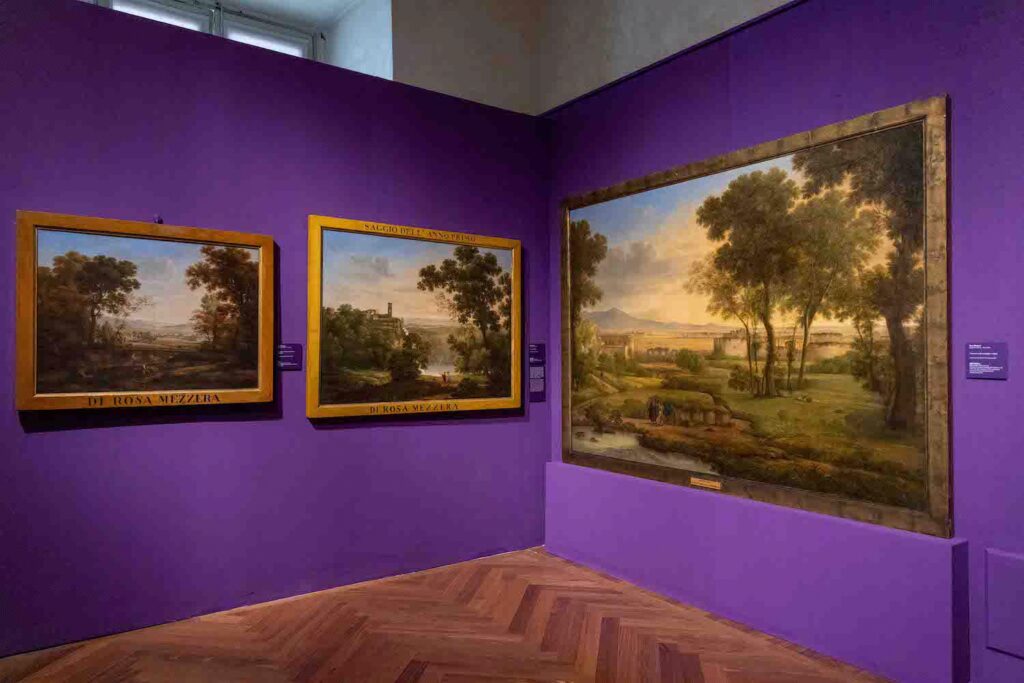
Charlotte Bonaparte painted serene landscapes in her watercolors. She often carried her paint box with her, which she immortalized in an iconic image. A few landscapes were on display in the 1809 exhibition on the Capitoline Hill, such as those by the Milanese Rosa Mezzera (1791–1826), which were so successful that Joachim Murat purchased them.
The exhibition ends with Raffaele Faccioli’s painting Last Autumn Smiles (1874, Museo Ottocento, Bologna). In this work, he depicts himself and his wife, Giulia Rizzoli (1857–1890), also a painter, painting en plein air.
Roma Pittrice: Women artists in Rome between the 16th and 19th centuries is on at Museo di Roma through March 25, 2025.
Author, journalist and art historian Alessandra Masu loves to unearth the stories of overlooked women and collects art created by women from the sixteenth to the twenty-first century. Alessandra’s writing has appeared in many places in print including D, la Repubblica’s weekly style magazine. As an art historian, she has contributed to several exhibitions and art publications and is the author of the historical novel Lena, che è donna di Caravaggio. In 2020, with Ginevra Bentivoglio Editoria, Alessandra published Perchè io non voglio star più a questa vita. La voce di Beatrice Cenci dai documenti conservati negli archivi romani. A second edition is forthcoming in 2025. In 2016 Alessandra, in collaboration with art historians Consuelo Lollobrigida and Beatrice De Ruggieri, founded the cultural association Artemisia Gentileschi, which is based in Rome. On March 8, International Women’s Day 2022, the association launched the Artemisie Museum project, the first virtual museum-database of women in the arts.
More posts by Alessandra Masu:
Carlotta Gargalli 1788–1840: “The Elisabetta Sirani of the Day,”
Judith’s Challenge, from Lavinia Fontana to Artemisia Gentileschi
Plautilla Bricci: A Painter & “Architettrice” in Seventeenth-century Rome
More posts about Italian women artists:
Maddalena Corvina’s Saint Catherine of Alexandria, by Kali Schliewenz
Plautilla Bricci (1616–1705): A Talented Woman Architect in Baroque Rome, by Consuelo Lollobrigida
Giovanna Garzoni’s Portrait of Zaga Christ (Ṣägga Krǝstos), by Alexandra Letvin
Exhibiting Artemisia Gentileschi; From the Connoisseur’s Collection to the Global Museum Blockbuster, by Christopher R. Marshall
Two of a Kind: Giovanna Garzoni and Artemisia Gentileschi, by Mary D. Garrard
Elisabetta Sirani of Bologna (1638–1665), by Adelina Modesti
Lavinia Fontana: Italy’s First Female Professional Artist, by Elizabeth Lev
Celebrating Bologna’s Women Artists, Babette Bohn
The Restoration of Royalty: Lavinia Fontana’s Queen of Sheba and King Solomon, by Aoife Brady
Sister Eufrasia Burlamacchi (Lucca, 1478–1548), by Loretta Vandi
Orsola Maddalena Caccia (1596–1676), Convent Artist, by Angela Ghirardi
More Art Herstory exhibition reviews:
Making Her Mark Leaves its Mark at the Art Gallery of Ontario, by Isabelle Hawkins
Sofonisba Anguissola in Holland, an Exhibition Review, by Erika Gaffney with Cara Verona Viglucci
Making Her Mark, An Essential Corrective in the History of Art, by Chadd Scott
Masters and Sisters in Arts, by Jitske Jasperse
Reflections on Making Her Mark at the Baltimore Museum of Art, by Erika Gaffney
In defense of monographic exhibitions of female artists: The case of Fede Galizia, by Camille Nouhant
The Ladies of Art are in Milan, by Cecilia Gamberini
Artemisia Gentileschi: What Wasn’t in the London Exhibition and Why it Matters, by Jesse Locker
“La grandezza del universo” nell’arte di Giovanna Garzoni / “The grandeur of the universe” in the art of Giovanna Garzoni, by Sara Matthews-Grieco
By Her Hand: Personal Thoughts and Reflections on an Exhibition, by Oliver Tostmann
Thoughts on Feminist Art History in the Wake of Artemisia: Vrouw & Macht at Rijksmuseum Twenthe, by Jitske Jasperse


